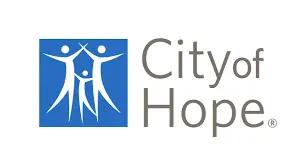
Adjuvant Therapy in Bladder Cancer: Real-World vs Clinical Trials

Alex Chehrazi-Raffle, MD, discussed a real-world analysis of clinical characteristics of patients with bladder cancer receiving adjuvant nivolumab or chemotherapy.
Nivolumab (Opdivo), a PD-1-targeted immune checkpoint inhibitor, has shown promise in improving disease-free survival for patients with muscle invasive bladder cancer after surgery. However, how doctors make treatment decisions in real-world settings between nivolumab and standard chemotherapy remains unclear.
“There [have been] a lot of new additions in the last year with enfortumab vedotin-ejfv [Padcev] plus pembrolizumab [Keytruda], kind of reshaping how we think about first-line metastatic disease. Real-world studies like this are going to be key to understand how those sorts of changes fit into the current practice patterns and how it can move forward with the new data,” said Alex Chehrazi-Raffle, MD, in an interview with Targeted OncologyTM.
A real-world analysis conducted by Chehrazi-Raffle, genitourinary medical oncologist at City of Hope Comprehensive Cancer Center in Duarte, California, and colleagues compared the characteristics of patients with bladder cancer who received nivolumab vs those who received chemotherapy after surgery. The researchers found that patients receiving nivolumab tended to have a worse ECOG performance status score, indicating poorer overall health. Patients who received nivolumab were also more likely to have PD-L1 testing and higher PD-L1 expression.1
Interestingly, patients receiving nivolumab were more likely to have certain health conditions like diabetes, hypertension, and kidney problems, making them ineligible for cisplatin-based chemotherapy. Conversely, patients receiving chemotherapy were more likely to have rheumatologic conditions.
These findings revealed that patient health significantly influences treatment choices in bladder cancer. Compared with those receiving chemotherapy, patients who received nivolumab tended to have more severe disease and other health limitations, highlighting the importance of considering individual patient factors when personalizing treatment plans for bladder cancer.
In the interview, Chehrazi-Raffle discussed the study presented in a poster at the
Targeted Oncology: What is the current treatment landscape in bladder cancer? What unmet needs exist?
Chehrazi-Raffle: Bladder cancer is divided, when it's localized disease, into non-muscle invasive and muscle invasive when [it] invades into the muscular layer of the bladder. Typically, treatment is initiated with cisplatin and gemcitabine neoadjuvant only if the patient is what's called cisplatin-eligible. That is a series of criteria that relies on performance status, heart function and kidney function. After the neoadjuvant therapy, they then go for cystectomy. Typically, when they remove the bladder, and depending on what's found [in] pathology, the patient then, per
What were the goals of the study that you presented at ASCO GU?
This was a real-world outcomes study that was done in partnership with Cardinal Health and Bristol Myers Squibb looking at the treatment patterns in patients who are receiving adjuvant therapy for muscle invasive disease. The primary focus of the study was to figure out what are the sorts of patients who are getting the adjuvant chemo[therapy] option vs adjuvant nivolumab, and then also how many patients are getting neoadjuvant chemotherapy to try and better understand what the real practices are.
Could you summarize the findings?
One of the key findings from the study was that there appears to be a practice emphasis on patients who have higher-stage disease getting adjuvant nivolumab compared with adjuvant chemotherapy, so that is going to be patients with stage IIIB. Why that is important is because these are typically patients who are a little bit sicker, a little bit frailer, and not as eligible or fit for chemotherapy, so that was a big finding from this study. Another aspect was that [in] the study, we had a much higher proportion of Black and Hispanic patients that were included in CheckMate 274. What we saw was even practice patterns across all different types of racial and ethnic minorities, so more representative of the real-world setting.
It was a little different than previous studies. We were not really focusing on clinical outcomes. This abstract, we are currently working on getting through that for our next iteration of the abstract returning and reporting out at [the ASCO Annual Meeting] in June. But for this study, it was mainly looking at clinical characteristics, so who are the patients that are getting the treatment? I think it was striking just to see that the patients who were ending up getting nivolumab did fall into this category of being so-called cisplatin-ineligible, and they ended up, like I said, being a bit frailer.
What are the next steps?
This was exclusively adjuvant therapy. For our next iteration, we are going to be including what the practice patterns were regarding neoadjuvant therapy. Did patients who had new adjuvant chemotherapy fair any differently than those who did not? And how many of those received adjuvant nivolumab? We are hoping to incorporate more of an outcomes analysis looking at events such as progression and depth to see how this fared in the real-world setting among patients who got nivolumab vs chemotherapy.








































